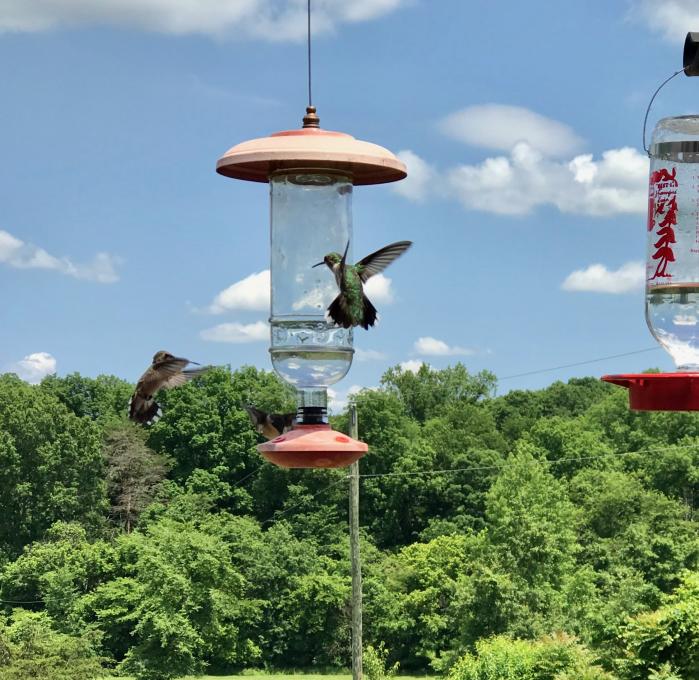Sheilah
Forum Replies Created
Viewing 10 posts - 1 through 10 (of 10 total)
-
SheilahParticipant
 in reply to: Activities: Bird ID Practice #714189
in reply to: Activities: Bird ID Practice #714189 -
SheilahParticipantActivity 1: I'm pretty sure we're getting both downy and hairy woodpeckers at our suet feeder. I'm basing this on size (hairy woodpeckers are larger than downys,) and the shape of the beak (hairy woodpeckers have a beak about as long as their heads, while downys have a shorter beak.) My Merline bird ID app helped me with this, although it says hairy woodpeckers are uncommon in my area (a semi-rural setting in Northern Virginia.) Downys are common here (habitat). I've also noticed some interesting behavior with the downy woodpeckers. A male and female have been coming to the suet feeder, and the male feeds the female. Does anyone know why they would do this?in reply to: Activities: Bird ID Practice #706086
-
SheilahParticipantHi Celeste, you inspired my curiosity about the Bermuda petrel, so I looked them up. What a fascinating conservation story! I hope they continue to increase.in reply to: Activities: Exploring Birds #701468
-
SheilahParticipantGreat picture of a turkey. How fun! We also get wild turkeys on our property, and I'm amazed at the size of them, especially when the males have their tails fanned out.in reply to: Activities: Exploring Birds #701062
-
SheilahParticipantWonderful story! So glad the little guy was ok!in reply to: Activities: Exploring Birds #700793
-
SheilahParticipantWonderful pics of Cockatoos, Marie, and thanks for offering a down-under perspective. I visited a step-sister just north of Sydney in Jan 2019, and saw cockatoos in her backyard. I was amazed!in reply to: Activities: Exploring Birds #700790
-
SheilahParticipantWonderful pic, Becky! I'd love to attract some orioles to our feeders! Guess I'll have to put out fruit.in reply to: Activities: Exploring Birds #700789
-
SheilahParticipantWhat a beautiful pic of a mourning dove! I love them too.in reply to: Activities: Exploring Birds #699086
-
SheilahParticipantlovely pics, Trevor! And useful info too.in reply to: Activities: Exploring Birds #699083
-
SheilahParticipantHi, A year ago we moved from a densely populated suburb to a semi-rural area in the mid-Atlantic states of the US. Since then, I've had a wonderful time watching birds at our numerous feeders. I'm completely new to birding. Some birds I've been able to identify include house finches, chipping sparrows, and goldfinches (songbirds), red-bellied woodpeckers, downey woodpeckers, and a pileated woodpecker (woodpeckers), wild turkeys, guinea fowl (maybe that's not fair, since they're domesticated and belong to our neighbors, but anyway, they're chicken-like birds), and today I identified a rose-breasted grosbeak (songbird? I'm not sure.) There are also Canada geese in a creek nearby. I'm definitely enjoying this Bird Academy course. The Merlin bird identification app is also very useful. It's hard to say which bird is my favorite, since they're all interesting. I think I'd say the pileated woodpecker, and the little sparrows, since they're so determined and adaptable!in reply to: Activities: Exploring Birds #699081
Viewing 10 posts - 1 through 10 (of 10 total)
